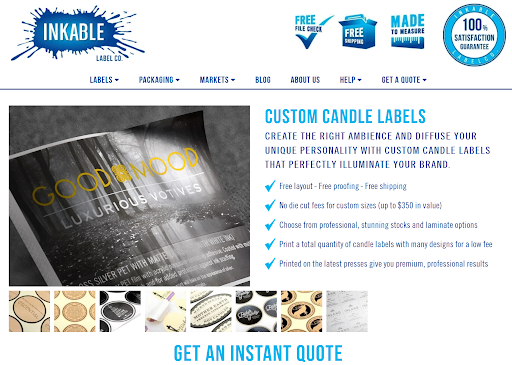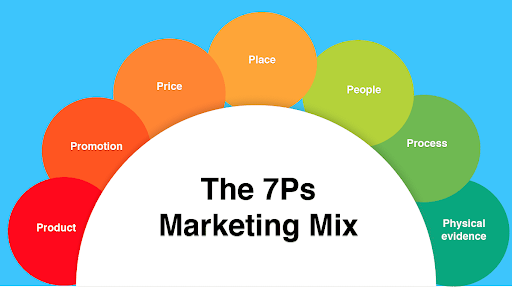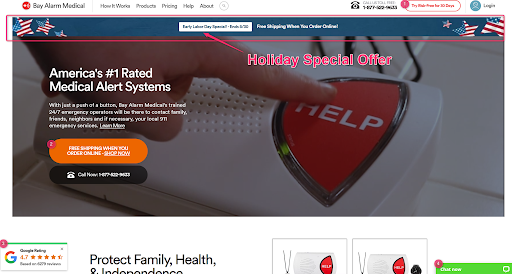Creating a successful marketing strategy is no easy feat.
Consumer behavior is constantly changing, and there are always new marketing trends coming out of the woodwork.
So what can you do to create a robust and successful marketing strategy in 2025?
Unfortunately, there isn’t a straightforward answer to this question.
Every business is different, meaning there isn’t a singular strategy that applies to every business out there.
But you can follow some best practices to give your marketing strategy a great chance for success. And that’s what we’re going to cover in this article.
So keep reading to get yourself up to speed on the dos and don’ts of creating a marketing strategy in 2025.
What is a marketing strategy?
A marketing strategy is a plan you create to reach potential consumers and convert them into customers.
Generally speaking, a marketing strategy includes the following:
- Your overall marketing goals
- Data on your target demographic
- Your brand positioning statement
- A review of your key competitors
- Your budget
- Your resources
This isn’t a definitive list. There might be other top-level information that you want to feature in your strategy, or you might choose to overlook some of the elements we’ve discussed.
As we’ve already mentioned, every business is different. So it’s no surprise that every strategy will be different, too.
6 simple steps to create a successful marketing strategy in 2025
Now the moment you’ve been waiting for: How to create your own successful marketing strategy.
We’ve outlined six steps that will help you create a successful marketing strategy in 2025, starting with your target audience.
1. Identify your target audience
Knowing your target audience is fundamental to a successful marketing strategy.
If you don’t know who you’re targeting, your marketing efforts will lack direction.
Let’s use an example to put it into context.
Inkablelabel is a label production company. It’s a B2B company targeting product managers and designers.
At the moment, its website is tailored to the target audience. It’s professional, easy to navigate, and clearly outlines what the company does.

But if Inkablelabel wasn’t aware of its target audience, it would lack the direction needed to optimize its website efficiently. As a result, consumers might not engage with the website in the same way and could leave the site altogether.
That’s why you need to know who your target audience is before you create your marketing strategy. Knowing who you’re targeting gives you the foundation you need to build a marketing strategy that’s tailored to your audience.
2. Understand the marketing mix
Understanding the marketing mix helps you identify key elements of your business and how to market your product effectively. Both of these areas are pretty important to creating a successful marketing strategy.
If you’re not familiar with the marketing mix, don’t worry. Here’s a breakdown of what it is and how it works.
Put simply, the marketing mix is a framework used to promote your brand or product. It’s also known as the 7Ps:

Here’s a bit more information about each P:
- Product: The product or service that you offer your customers. As a marketer, you need to understand your product inside and out.
- Price: The cost consumers pay for your product or service. This involves any discounts you might offer and whether your brand perception is low-cost or luxury.
- Promotion: All of the promotional efforts you use to advertise your product or service. Paid ads, social media posts, and print ads are a few examples. The goal is to show customers what your product is and why they need it.
- Place: The location in which you’ll sell your product. This could be a physical location, an online store, or both.
- People: This refers to anyone who works for your company. Anyone interacting with customers must have a thorough understanding of the company and the product or service you provide.
- Process: The process of purchasing and receiving your product or service. To keep your customers happy, aim to provide a streamlined and efficient buying process from start to finish.
- Physical evidence: This refers to anything your customer sees about your product. From your website and online reviews to social media posts and the confirmation email they receive when they make a purchase, every contact point influences their perception of your brand.
Try to familiarize yourself with the 7Ps and how each of them aligns with your business. This is a surefire way to create a robust marketing strategy.
3. Tailor your content to your marketing strategy
Almost 40% of marketers say that content marketing is important to their overall marketing strategy.
That’s almost half of companies using content as part of their marketing efforts.
Why?
Because content plays an important role in marketing.
When done well, content marketing increases brand awareness, improves the customer experience, and generates leads.
But to reap the benefits of content, you need to create a content strategy that aligns with your overall marketing goals.
Let’s take a look at this in action.
Earlybird is an app focused on helping parents, family, and friends invest in a child’s future.
To target different customer bases, it has created a series of blogs around gifting for children from various relatives.
This article about gifts for godchildren is part of that series:

This use of content aligns with the goal of the company: to encourage the audience to invest.
So make sure you think about how you can use content to achieve your marketing goals. If you manage to align your content with your marketing strategy, you’re on to a winner.
4. Take a look at past results
To inform your new marketing strategy, it’s always a good idea to look back at results from previous years.
For instance, let’s say your previous marketing strategy was focused on reaching a new audience. Despite your marketing efforts, you saw minimal interest from the new audience.
So you ask yourself: What went well and what could be improved?
By reviewing this information, you can see your greatest strengths and any opportunities for improvement.
As a result, you can optimize your new strategy to get the best results possible.
Review your previous digital marketing strategies. This puts you in a good position to create something new and more effective.
5. Review your competitors
Reviewing your competitors is incredibly useful when it comes to creating a marketing strategy.
Not only does it keep you informed about what’s happening in your industry, but it can also help you identify any gaps in the market. During this review process, Css selector can help you dig deeper into how competitors structure their websites behind the scenes, from tracking behavior to understanding API activity.
For instance, let’s say you’re reviewing multiple competitors’ websites for medical alert devices. You look at their homepages and notice that they have included a chatbot, customer reviews, 30-day risk-free trials, and even free shipping. But not all of them added each element.
*Cue light bulb moment.*
You can fill that gap.
If consumers want something that your competitor isn’t offering, you can give it to them instead.
Check out how Bay Alarm Medical does this by including all those elements on their homepage, and putting the extra mile to add a limited time offer in line with the holidays.

Spend some time reviewing what your competitors are doing well and what they could do better. This could give you some valuable insight into your marketing strategy.
6. Choose the right marketing tools
Using the right tools is key to implementing and tracking your marketing strategy.
But we know that finding the right tools is easier said than done, especially when there are so many out there to choose from.
So how can you make sure you’re using the best marketing tools for the job?
A good place to start is to make a list of the features you need from a platform.
For example, imagine you’re looking for a platform to track and measure your sales and video engagements. Before you start your search, outline all the features you need from that platform.
This means you can easily filter through the options available and find the platforms that provide you with what you need.
And don’t forget that a lot of platforms offer a free trial, too. You don’t have to commit right away, so try a few different tools to see what works best for you and your business.
Time to create your marketing strategy
You should now have a solid understanding of how to develop a successful marketing strategy.
It’s time to put your newfound knowledge into practice.
So long as you have a solid understanding of the marketing mix, your target audience, and what your competitors are doing, you should have all the information you need to create a robust marketing strategy.
And just one final piece of advice: continually review your strategy when it’s live. Check in on how your marketing efforts are performing to keep yourself on track to reach your goals.

